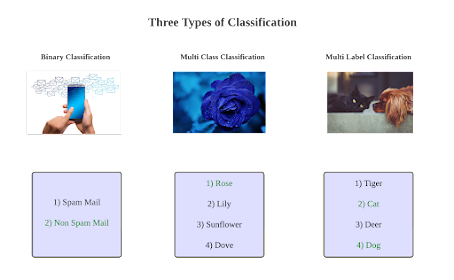In machine learning, multilabel classification is a classification task where multiple labels may be assigned to each instance. This is in contrast to traditional classification, where each instance is assigned only one label. Multilabel classification is useful in cases where there are multiple possible labels for a single instance, and each label represents a different aspect or category of the data. For example, an image recognition system might be trained to recognize multiple objects in an image, such as a cat, a dog, and a person, and assign one or more labels to each image accordingly. Because each instance can have multiple labels, the output of a multilabel classification model is often represented as a binary matrix, where each column corresponds to a different label and each row corresponds to a different instance.
How to create a convolutional neural network for multilabel classification in TensorFlow!
To create a convolutional neural network (CNN) for multilabel classification in TensorFlow, you will need to perform the following steps:
- Import the necessary modules from TensorFlow, such as keras and layers.
- Define the input and output layers for the model. The input layer should have the shape of your input data (e.g., a 2D image) and the output layer should have the number of classes you want to predict.
- Define the convolutional layers for the model. These layers will apply a convolution operation to the input data, using a set of filters to extract features from the data.
- Define the pooling layers for the model. These layers will reduce the spatial dimensions of the convolutional layers while retaining the most important information.
- Define the dense (fully-connected) layers for the model. These layers will take the output of the pooling layers and perform classification on the features extracted by the convolutional layers.
- Compile the model by specifying the optimizer, loss function, and metrics to use during training.
- Train the model on your training data, using the fit() method. Note that in here we use the binary_crossentropy loss function, unlike the regular single-label classification model where we use Cross_entropy or Categorical_crossentropy.
- Evaluate the performance of the trained model on your test data, using the evaluate() method.
Here is an example of how you might implement a CNN for multilabel classification in TensorFlow:
# import necessary modules from TensorFlow
import tensorflow as tf
from tensorflow import keras
from tensorflow.keras import layers
# define the input and output layers for the model
inputs = keras.Input(shape=(32, 32, 3))
x = layers.Conv2D(32, 3, activation="relu")(inputs)
x = layers.Conv2D(64, 3, activation="relu")(x)
x = layers.MaxPooling2D(3)(x)
x = layers.Flatten()(x)
outputs = layers.Dense(10, activation="sigmoid")(x)
# compile the model
model = keras.Model(inputs, outputs)
model.compile(optimizer="adam", loss="binary_crossentropy", metrics=["accuracy"])
# train the model on your training data
model.fit(X_train, y_train, batch_size=64, epochs=10)
# evaluate the model on your test data
model.evaluate(X_test, y_test, batch_size=64)
How to evaluate a multilabel classification model!
- Accuracy: This metric measures the percentage of correct predictions made by the model. However, it can be problematic for imbalanced data or when some labels are more important than others.
- Precision: This metric measures the fraction of true positive predictions among all positive predictions. It can be calculated for each label individually, or for the entire model.
- Recall: This metric measures the fraction of true positive predictions among all actual positive instances. It can be calculated for each label individually, or for the entire model.
- F1 score: This metric is the harmonic mean of precision and recall, and is often used to combine the two metrics into a single score. It can be calculated for each label individually, or for the entire model.
- Hamming loss: This metric measures the fraction of labels that are incorrectly predicted by the model. It is calculated as the average number of incorrect labels across all instances in the test set.
# import necessary modulesfrom sklearn.metrics import precision_score, recall_score, f1_score# calculate the precision, recall, and F1 score for each labelprecision = precision_score(y_true, y_pred, average="micro")recall = recall_score(y_true, y_pred, average="micro")f1 = f1_score(y_true, y_pred, average="micro")# print the resultsprint("Precision: %.3f" % precision)print("Recall: %.3f" % recall)print("F1 score: %.3f" % f1)



Comments
Post a Comment